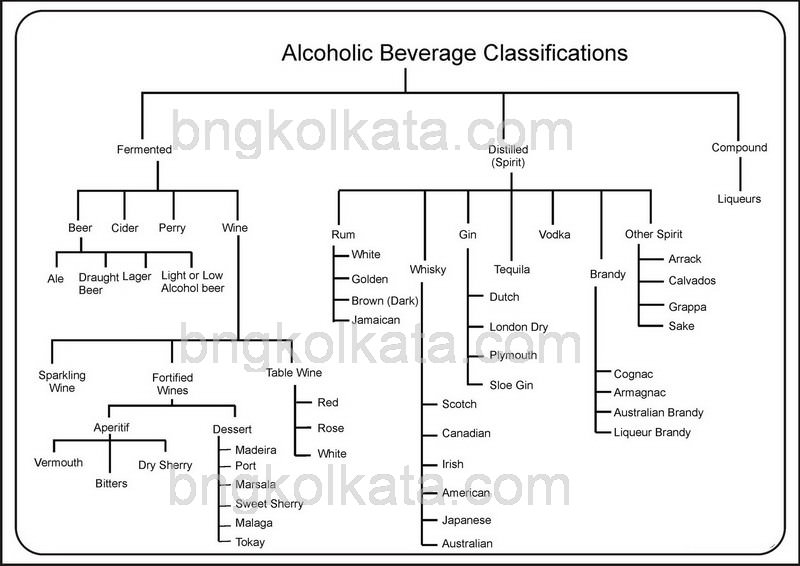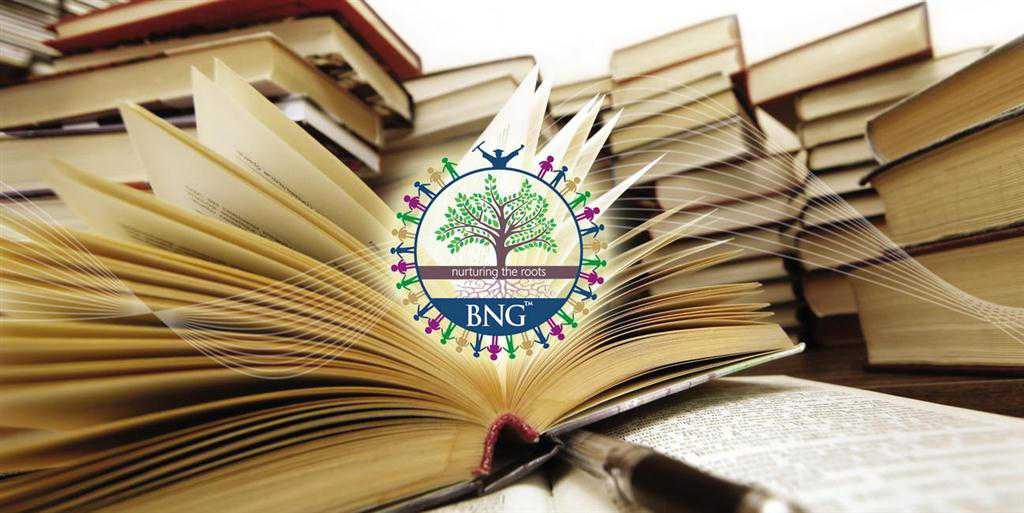Alcoholic Beverages
Alcohol is a volatile, mobile, colourless fluid with an ethereal odour, obtained by fermenting a liquid containing sugar, the strength of which can be further increased by distillation. The name is derived from the Arabic word, al-kohl. Kohl is a black, very fine staining powder which is used cosmetically. Later the name was applied to highly refined chemical powders and essences and then to spirits produced by distillation and rectification. There are many members of the alcohol family, but ethyl alcohol is the best known and the one that concerns us most, as it is the principal alcohol to be found in all alcoholic beverages.
Alcoholic Beverage is any potable liquid containing from 0.5% up to 75.5% of ethyl alcohol by volume. Different alcoholic beverages have different alcoholic strengths, which means the alcohol content of the beverage. Long before distillation became a science, the early distillers had an unique and entertaining method of testing alcoholic strength. They mixed equal quantities of spirit and gunpowder and applied a flame to it. If the mixture failed to ignite, the spirit was too weak; if it exploded or burned too brightly, it was too strong, but if it burned evenly with a mild blue flame, it was ‘proved’ suitable and safe to drink (potable). Hence, the word ‘proof’ came into vogue.
This primitive method was superseded by a man called Clarke, who invented a weighted float in late seventeenth century. When this was dropped into a spirit, the depth to which it sank revealed the density of liquor and from that knowledge the alcoholic strength could be calculated. He was then able to calibrate a particular strength as ‘proof’.
Further sophistication came when Board of Excise man Bartholomew Sykes introduced his now famous Sykes Hydrometer in 1816. The apparatus was adopted by the Exchequer under the Hydrometer Act in 1818. Sykes determined that 100 degrees was proof and that pure alcohol was 175 degrees (75 degrees over proof). On this scale, the figure for pure alcohol is 1.75 times the figure accorded to proof spirit. In other words, 100º proof equals 57.1% alcohol and 42.9 % water. The system became traditional throughout the United Kingdom where spirits were sold at a potable strength of 70 degrees proof (30degrees under proof). So to convent the British proof into percent by volume of alcohol, one simply multiplies the proof by four and divides by seven. Example: 70 degrees proof = 70 X 4 = 40%.
A French chemist Joseph Gay-Lussac invented a system which was much easier to understand and which was adopted throughout mainland Europe. The Gay-Lussac or GL System had 0º for the absence of alcohol and 100º for pure alcohol. Thus in this case, degree equals percentage. The Americans introduced their own system where they decided that proof spirit was an exact balance of alcohol and water and that pure alcohol should be 200º. Each degree of proof equals one-half percent of alcohol. So, a spirit marked at 90º proof would contain 45% of alcohol by volume.
The Sykes system is no longer in use in the United Kingdom. It has been replaced by a new system, the Organisation Internationale de Métrologie Légale (OIML), which expresses alcoholic strength as a percentage by volume of alcohol. It is very similar to the Gay-Lussac system except that OIML measures strength at 20 ºC while GL does so at 15 ºC, which gives a slightly higher reading.
TYPES OF ALCOHOLIC BEVERAGES
For purposes of classification all alcoholic beverages fall into one of three basic categories:
- Fermented beverages
- Distilled spirits
- Compounded beverages
Fermented Beverages :
All alcoholic beverages begin with the fermentation of a liquid food product containing sugar. Fermentation is the action of yeast upon sugar in solution, which breaks down the sugar into carbon dioxide and alcohol. The CO2 escapes into the air, and the alcohol, a liquid, remains behind in the original liquid, which thus becomes a fermented beverage. Beers and wines are fermented beverages. Beer and ale are made from fermented grains. Wines are made from fermented grapes and other fruits.
Find all about Nonalcoholic Beverages .. here
Distilled Spirits :
If the alcohol can be separated from a fermented liquid, what is obtained is essentially the spirit of the liquid. A spirit is a potable alcoholic beverage obtained from the distillation of an alcoholic-containing liquid. The process of separation is called distillation. The liquid is heated in an enclosed container called a still. In this process, however, it is inevitable that certain other matters will also be separated and it is these congeners, which we call impurities, that give several spirits their distinct character after the spirit has been matured in wood, and the congeners have fully developed. Brandy, whisky, rum, gin, vodka, tequila, etc. are examples of distilled spirits.
Compounded Beverages:
Compounded beverages are made by combining either a fermented beverage or spirit with flavouring substances. Various types of liqueurs, such as Benedictine, Tia-Maria, Crème de menthe, etc. and various types of bitters such as Campari, are examples of compounded beverages.






